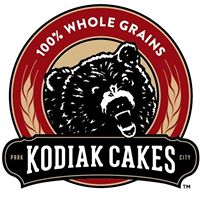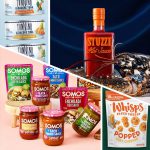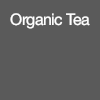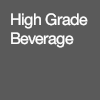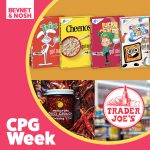Mixing it Up: Baking Mix Sales Rise During Covid-19
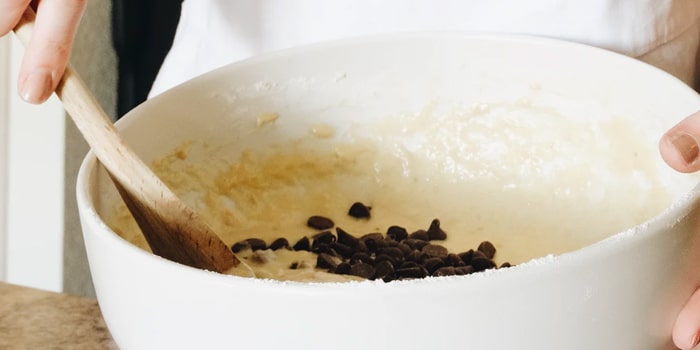
The answer is yes: baking mix sales are shooting up, according to SPINS data shared by Presence Marketing, while much has been made of the spike in flour and yeast sales, baking mixes are seeing just as much success in stores — if not more. For the week of March 22, although shelf-stable baking ingredients were up 122.9% compared to the same week last year and flour up 236.5%, shelf-stable baking mixes and pancake/waffle mixes were up 236.5% and 186.5%, respectively. Together, the category as a whole was the highest indexing food set for the weeks of April 5 and 12.
An Unusual Spike
The baking category typically sees predictable sales, with turns every 60 days, Foodstirs co-founder Greg Fleishman said. Purchases are often centered around either impulse eating occasions — “I want cookies” — or holidays, such as birthdays, he added. But the Coronavirus has thrown predictability out of the window.
“The category is blowing up, finally,” said Fleishman, who helped launch Foodstirs with the idea of cleaning up a tired baking mix space. “For the last five years there’s been so much focus on the perimeter of the store and center store was taking a back seat across all categories… and now center store is hot again.”
For many baking brands, the previous solution to these slower turns was to launch into other faster moving categories, such as Foodstirs’ recent ready-to-eat desserts, Simple Mills’ crackers and Kodiak Cakes’ mug cakes, graham crackers and frozen lines. But with fewer consumers on the go, and retailers prioritizing “essential items,” many of those lines intended to grow the platform are taking a backseat to the baking mixes the brands first used to break into stores.
For baking and breakfast brand Kodiak Cakes, the growth is “just unbelievable,” founder and CEO Joel Clark said. The company has seen its baking mix SKUs rise in sales 131% over the last 12 weeks, and 167% in the past four weeks in dollars. Kodiak’s pancake and waffle mixes are up 80%.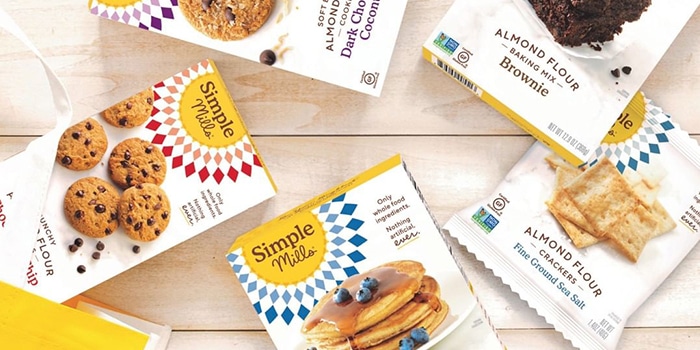
Some of the rise in baking mixes may be attributed to consumers wanting sweet treats and not being able to gain access to raw ingredients or their favorite brand of baked goods, while other shoppers may feel more comfortable eating food they prepare at home. For brands, though, the answer seems to be the increase in free time that’s the reason for the spike.
While working remotely and distance learning may create their own set of issues, in some ways sheltering at home orders have freed up time consumers may have spent commuting, heading to the gym or running errands — providing the opportunity to explore new passions such as baking. But, despite the interest in the hobby, there’s still the matter of knowing how to bake. Enter mixes, which offer new bakers an easy start, and gives experienced bakers a less time intensive activity.
Stir in social media, where glamour shots of baking projects have always been a key part of sites such as Pinterest and Instagram, and it’s a recipe for increased consumer demand.
“People have always loved following [food social media and food blogs} but when you actually have time it’s like ‘okay I can actually make these things that I always dream about making,’” Clark said. “They feel like it can be a little more complex than before and people are willing to give it a try.”
According to SPINS, several trends in shopping and eating have emerged during the pandemic, among them the rise of the cooking and keeping a larger stockpile of food items on hand). Consumers, the research firm found, are also prioritizing products that offer value and are convenient.
As a shelf-stable, home-cooked staple, one that is still cheaper than buying pre-made baked goods, and requires less time than scratch baking, mixes check many of these boxes.
Clark agrees, particularly, with the value aspect. Although Kodiak Cakes has specialized mixes for brownies and muffins, it has been offering consumers more recipes with its popular original waffle and pancake mix in order to demonstrate how the product can go beyond breakfast staples and be used for other occasions. The company has also seen more consumer interest in its protein-enhanced offerings as worries of a meat shortage hit the U.S. Clark has also had retailers suggest they will be encouraging consumers to look to other sources of protein, such as their mixes.
Baking also allows families to come together and reinforce some of the lessons children are learning during distance learning sessions, Foodstirs co-founder Galit Laibow said.
“Our mission has always been to help people connect in the kitchen through baking or great food experiences and now people are at home, we’re able to create weekly rituals that further bonding,” Laibow said. “This event will change the way that we do things and we think baking, or coming together in the kitchen, is going to make people realize it’s great for the family.”
Most importantly, though, is that amidst an uncertain time, baking lets consumers tackle something with a clear end result, says Katlyn Smith, founder and CEO of Simple Mills.
“I think [the feeling] of accomplishing something during this time is part of it,” she said. “Because people don’t have a very clear idea of where they are going, there’s a lot of ambiguity and direction and there’s a feeling of importance in seeing that you achieved something.”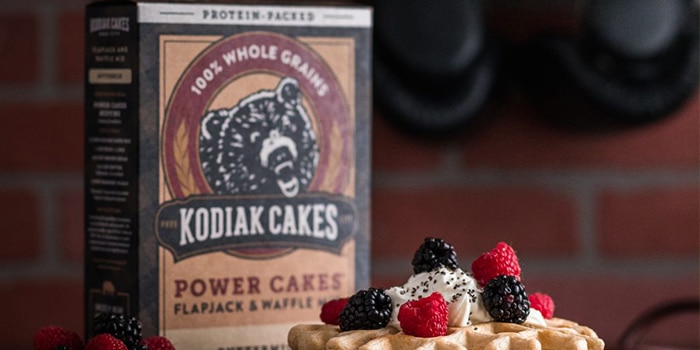
Although much media attention has been paid to shortages of flour and yeast on store shelves, mix brands have not reported supply chain issues in gaining access to bulk ingredients. Some believe that the out-of-stocks consumers are reporting are due to having to redirect foodservice food supplies for shuttered restaurants, schools and hotels, and the lag in repacking these items in store-friendly packaging sizes.
However, most are staying in close contact with their suppliers, and told NOSH when first news of the pandemic hit, they made sure to go heavier on inventory. Simple Mills has also built redundancy, adding new ingredient suppliers to its pipeline in order to make sure they have an option when needed. The issue the gluten-free company has, Smith said, is the time it takes to verify ingredients are in fact free of allergens and then run samples on a line to make sure the ingredients work well in their recipes.
“Contingency planning is the name of the game right now,” Smith said. “If you think about the risks [for disruption] that you encounter across your supply chain, it’s at every point.”
Fleishman also reported a lack of ingredient shortages for Foodstirs mixes, but noted their solution has been to source 95% of their raw ingredients from U.S. manufacturers and work directly with ingredient suppliers, rather then going through brokers where “[you’re] in a queue with thousands of other brands that are looking for vanilla, cinnamon or flour.”
Once ingredients are procured, there’s still production. Fleishman noted that as products go, mixes are somewhat easier to produce then other foodstuffs because they are typically an array of dry powders, simply mixed, in specific ratios. Foodstirs’ co-packers, he added, have been adding more shifts in order to meet demand.
Of course once you have a product made, you have to be able to get it into the hands of the consumers. Some retailers, both online and brick and mortar, hadn’t anticipated the demand, even though they had designated the products as essential items, said. For example, at the time of the interview, Amazon was out of stock of most of the brand’s products aside from a 6-pack of its sugar cookie mix.
Other retailers may want more product than brands can provide. “Our team [is] working closely with our partners to make sure that we’re meeting their demand but not going too far above their demand so that we can make sure that everyone stays in stock,” Smith said.
So how long will the boom last? Smith has a holistic take on the question, saying she hopes the pandemic brings about greater awareness among consumers of where their food comes from, the effort that goes into producing it and just how fragile the supply chain can be, especially with regard to farming. She thinks that natural food consumption will grow as consumers have more time to read about what’s actually in their food.
Clark is circumspect and offers conservative advice for brands: Keep an eye on maintaining your business during the short term, and then reassess in a few months. Although Kodiak Cakes has slightly revised its sales projections, it only has protected a 15% increase over the course of the entire year. The company plans to move ahead with its existing innovation pipeline, launching both protein balls and a lower-carb mix line, but it will hold off on more investment in baking until there’s more certainty about the “new normal.”
“There’s data, but it’s also based on some judgement calls,” Clark said. “I am really curious — are people going to continue to do this because it’s a new habit, or is it ‘I tried it a few times, it was nice.’”

